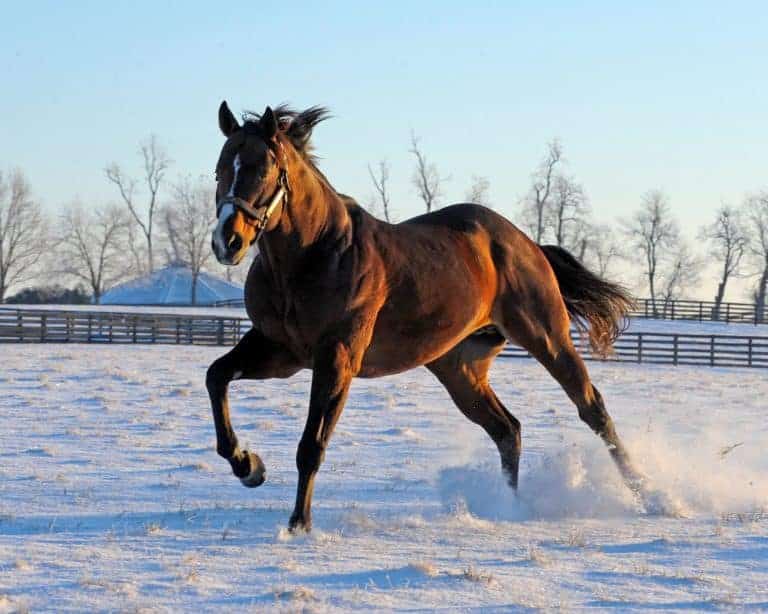Colic – AAEP State of the Art Lecture
The Role of Obesity in Insulin Resistance
“Not all obese individuals are insulin-resistant, and not all IR-affected horses are obese. But IR-associated medical problems are more likely to develop in concert with obesity in individuals born with IR,” said Nat Messer, DVM, Dipl. ABVP, an
Obesity, Insulin Resistance, and Laminitis
Insulin resistance is a part of equine metabolic syndrome (EMS). There are three criteria for identifying the horse with EMS: Insulin resistance, prior (founder lines) or current laminitis, and general obesity or regional adiposity (areas of abnormal
Oral Joint Supplements: Do They Work?
Low bioavailability of oral glucosamine, poor product quality, low recommended doses, and a lack of scientific evidence showing efficacy of popular oral joint supplements are major concerns.
Inducing Ovulation With Recombinant Equine Luteinizing Hormone
Manipulating the estrous cycle in mares is a big part of many breeding operations, and medications play various roles in the process. There are several options for inducing ovulation, including human chorionic gonadotropin (hCG),
Dermatology Review
Skin ailments were broken down into classifications of pruritic (itching), nodular, or crusting lesions. The variety of problems discussed included common equine skin diseases like sarcoids, insect hypersensitivity, hives, allergies, photosensitivit
Colic in Horses: An Overview for Owners
What’s the one word that strikes fear into the hearts of all horse owners? Colic. It can strike any horse at any age for a myriad of reasons–there’s impaction colic, gas/spasmodic colic, strangulating colic, and many other versions. At the
Barefoot versus Shod Discussed
If hoof structures are poorly developed, then they will be less capable of going barefoot and, even when shod, not as ready for withstanding continuous training. To avoid sore feet, the quality of the trimming and shoeing and interval between shoeing
Intratumoral Chemotherapy Helpful in Preventing Sarcoid Recurrence
Veterinarians have attacked sarcoids with everything from scalpels to lasers, and cryotherapy to caustic chemicals. But chemotherapy administered intratumorally could be a viable new option in removing and preventing future outbreaks, according
Shivers in the Horse: A Review
Shivers has been recognized by horse owners for more than a century and refers to a chronic nervous or neuromuscular condition that in a 1962 text was said to be “as common as dirt.” This statement referred to the period when draft horse populations
Successful Breeding of Older Maiden Mares
Success when breeding older maiden mares depends on the management of several factors
Joint Disease and Lameness
More than half of all equine lameness is due to noninfectious joint disease and injury. It can happen from one bad step, but it’s most likely due to cyclic (repeated) trauma.
What Causes Pituitary Pars Intermedia Dysfunction?
The lack of dopamine is critical, as the activity of the pars intermedia is normally inhibited (controlled) by dopamine. Without dopamine, the pars intermedia produces much more hormone than it should, causing the clinical signs of PPID.
Equine Emergency Care Tips
The first thing most guides on handling emergency situations will tell you to do is be prepared for that emergency. Know what can happen, what you’ll do in that situation, who you’ll call, what supplies you’ll need, etc. For an equine health
Training Your Horse for Procedures–And Everything Else
“It is our responsibility to have the horse so well trained that we can do whatever we need to do without a problem,” he stated. “Our horse does not have the right to hurt anyone. It’s not because the vet smells funny that a horse hurts him
Influenza Canarypox Vaccine Reduces Clinical Signs and Shedding
Researchers found that clinical signs of influenza and virus shedding were significantly reduced in horses vaccinated with a recombinant canarypox-vectored influenza vaccine and experimentally exposed to influenza compared to unvaccinated horses















